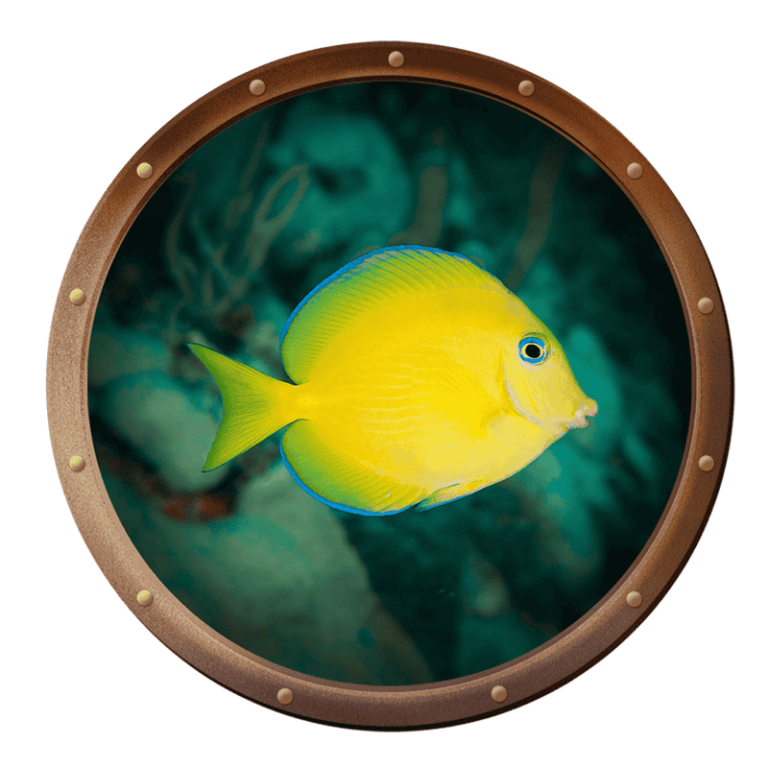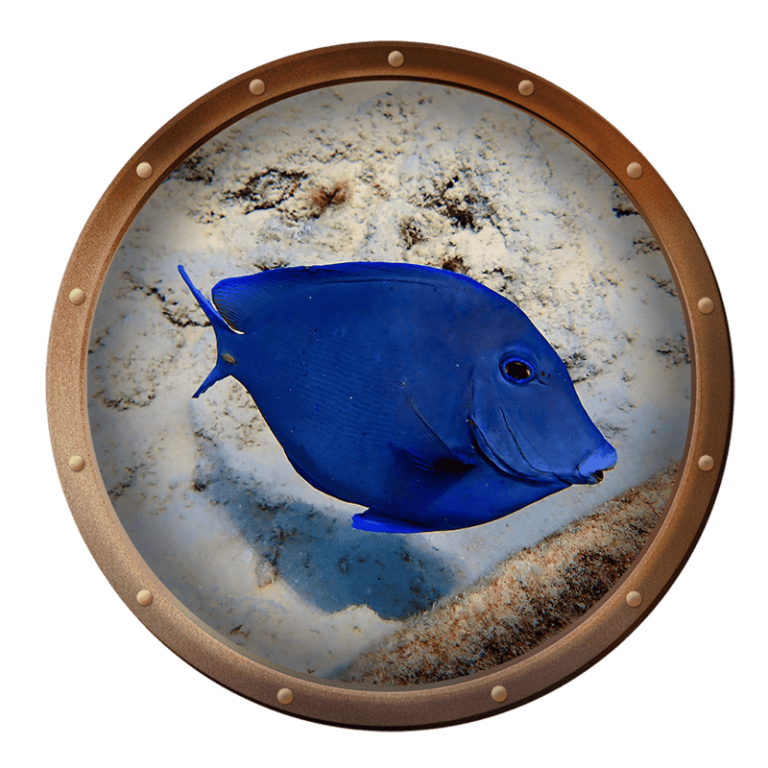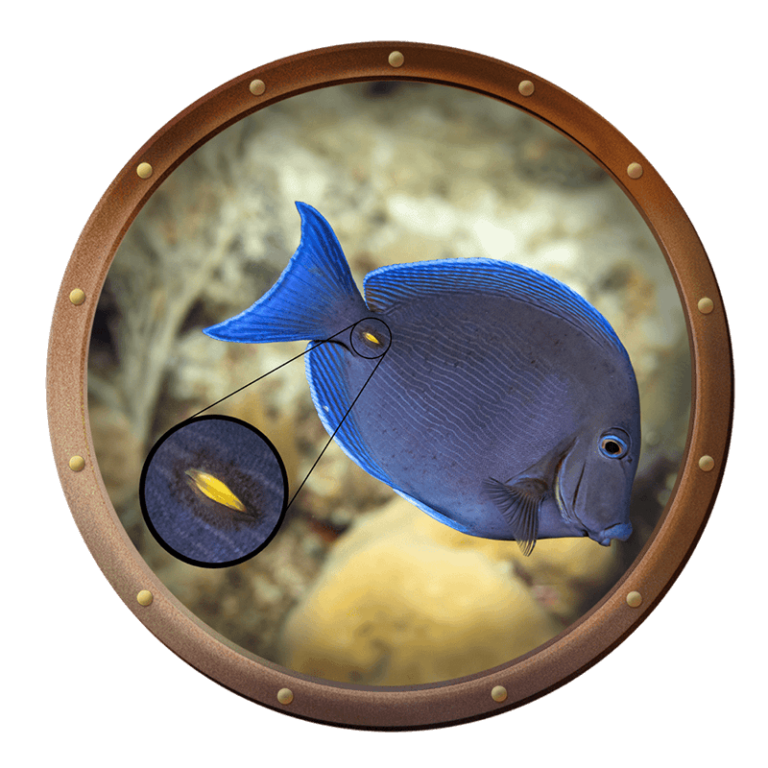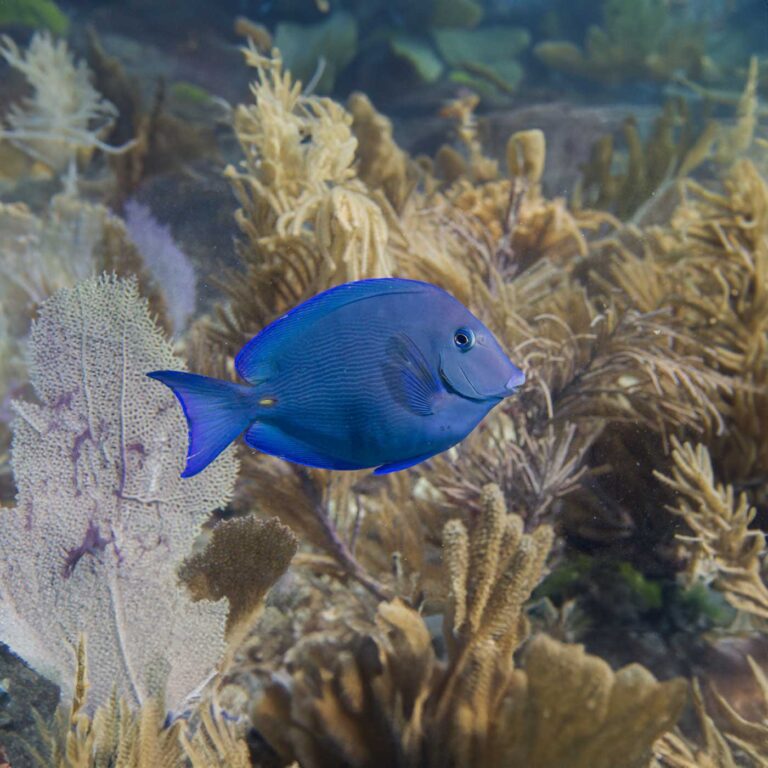FUN FACTS ABOUT BLUE TANG FISH
The Atlantic blue tang is named for the beautiful blue color of the adults; however, they do not start off this way! This fish has distinct life stages that are characterized by color changes. Larval blue tangs, called Acronurus, are translucent and don’t start to develop color until they are about two weeks old. The juveniles of this species will first appear bright yellow and transition to blue as they mature. This is a common trait among fish; the juveniles will look very different than the adults. The reasons for this may include signaling to other fish that they perform a service, such as cleaning, or to prevent adults from seeing the juveniles as a threat.


GREAT GRAZERS!
Atlantic blue tangs are important grazers on the reef. They roam the reef and use specialized teeth to eat algae that can overgrow and kill corals. They only eat the filamentous algae, which is stringy and soft, and avoid the hard calcareous algae since they are unable to digest it. This is an essential function and makes them a vital member of the reef ecosystem. They can be seen on their own, in pairs, and even in large schools with other tang species, which can eat calcareous algae as well. These large schools help the tangs access the territories of other fish, especially the fiercely protective damselfish, without getting chased off.

Atlantic blue tangs belong to the Acanthurus genus of fish, which also includes ocean surgeonfish, Acanthurus bahianus, and doctorfish, Acanthurus chirurgus. This genus gets its name from the Greek roots “acantha” and “oura,” which translate to “thorn” and “tail,” referencing the sharp, scalpel-like spine these fish have on the base of the tail. This spine can be extended and used for defense against predators, or even during fights with other tangs.

WHAT’S IN A NAME?
Two species of fish are commonly called “blue tangs” However, they live on opposite sides of the globe! The Indo-Pacific species, Paracanthurus hepatus, is widely recognized as the forgetful sidekick of a clownfish in a popular movie. This fish is also called a Hippo tang or regal blue tang. Many species have multiple common names or share a common name with another species from a different part of the world. To make sure that scientists know which species is being referred to, a two-part scientific name is used. This is known as binomial nomenclature and includes the genus and species name for each organism. Every organism has only one official scientific name, which often uses Latin or Greek roots. This name can change based on new information about relatedness, but this only happens after lots of scientific review and discussion.

